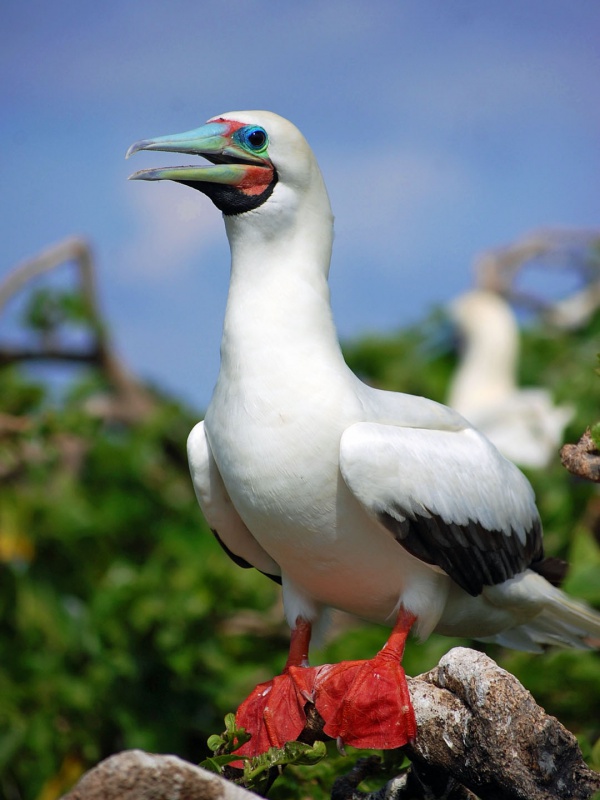Facts About Red-footed booby
The red-footed booby is a captivating seabird, easily identified by its vivid red feet and a variety of plumage colors. Although they are proficient fliers, their takeoffs and landings can appear somewhat clumsy. These birds are typically found in tropical regions, where they breed in colonies on coastal islands. Despite a declining population, the International Union for Conservation of Nature (IUCN) still designates them as a species of least concern.
Carl Linnaeus first described the red-footed booby scientifically in 1766. The species includes three subspecies and represents the smallest members of the booby and gannet family, exhibiting several color morphs such as white, brown, and black-tailed.
Red-footed boobies generally nest on islands, laying a single egg that is incubated for 44 to 46 days. Their diet primarily consists of small fish and squid, which they capture by plunging into the ocean at remarkable speeds. Despite ongoing conservation efforts, their population continues to face challenges, particularly from environmental phenomena like El Niño, which can adversely affect their breeding success on islands such as Christmas Island.
Remarkably, there have been notable sightings of red-footed boobies far from their usual habitats, including instances in the UK and New Zealand. While they face few natural predators, environmental changes that impact their food supply can pose significant threats.

 Mexico
Mexico